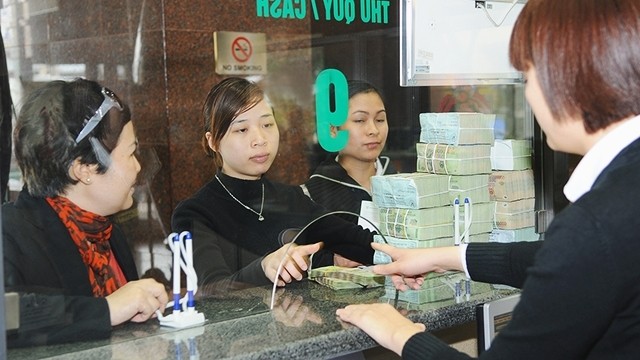There are grounds for such a concern because Vietnamese enterprises remain small-sized and struggle with scores of difficulties, while their productivity is lower than that of regional rivals, growth is mainly driven by the foreign sector and management risks remain significant.
Director of the Central Institute of Economic Management (CIEM) Tran Dinh Thien has observed that many people are so elated at last year’s economic performance that they call it a miracle but he said that such a result requires a more thorough assessment.
According to the economic expert, the quality of growth requires attention. Looking back at 2017 shows that the growth drivers were largely the same as previous years. Domestic enterprises are supposed to be the pillars of the economy but they remain relatively small, while there is a lack of effective cooperation between them.
The financial sector and stock market saw an upswing in 2017 but remained structurally weak, while human resources for the future economic structure are nowhere to be found.
In addition, Vietnamese enterprises are still bearing elevated logistics costs, which account for one fifth of GDP, while the world’s average is just 11%.
Sharing Thien’s view, former Deputy Minister of Planning and Investment Dang Huy Dong stated that Vietnam should not be pleased with itself but should anticipate the risks that could spring up in the future in order to take appropriate and timely action.
He advised that the measures which have proved effective need to be stepped up while calling on the government to continue curbing costs and complete the essential infrastructure.
For his part, Dr Vo Tri Thanh, a former deputy head of CIEM, pointed out a paradox that Vietnam recorded rapid economic growth but was still among the least productive economies in the region, which he attributed partly to poor management and out-dated technology.
Commenting on Vietnam’s brighter economic landscape in 2017, Nguyen Xuan Thanh, director of the Fulbright Economics Teaching Program, said that as the global economy recovers, most of the developed and emerging economies also improve and Vietnam is no exception.
He noted that growing private consumption was an important factor driving growth during the 2015-2017 period and will continue to catapult growth in 2018.
In addition, an expanding services sector, which grew 7.5% last year, will still help to drive growth even as positive short-term factors no longer support growth. But in order to achieve this, the government must be able to stabilise interest rates in order to boost consumption, Thanh added.
Analysing the challenges facing the Vietnamese economy in 2018, Le Xuan Nghia, a financial expert, said that capital and manpower are the two ultimate factors that need to work together. This is a long-term issue that needs greater attention so that Vietnamese enterprises could become more competitive.
Nghia also expressed his concern over Vietnam’s intention of lowering deposit rates in order to reduce borrowing costs for enterprises, elaborating that if deposit rates are lowered, banks’ liquidity will be affected since depositors will withdraw their funds to buy gold and foreign currencies.
He identified high bad debts and government costs as among the reasons behind the high interest rates on bank loans, and called for greater efforts to bring these costs down.
The expert emphasised that a policy’s details are not as important as how it is carried out in practice and expects 2018 to be a year of actions and monetary policy aimed at long-term goals.
















